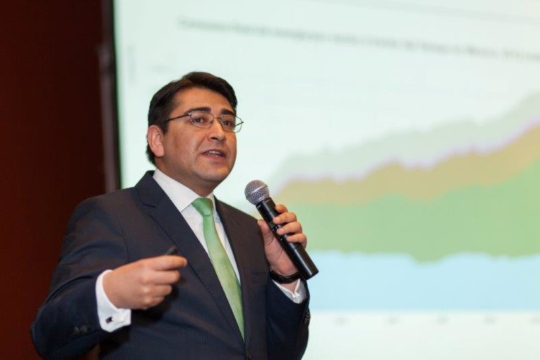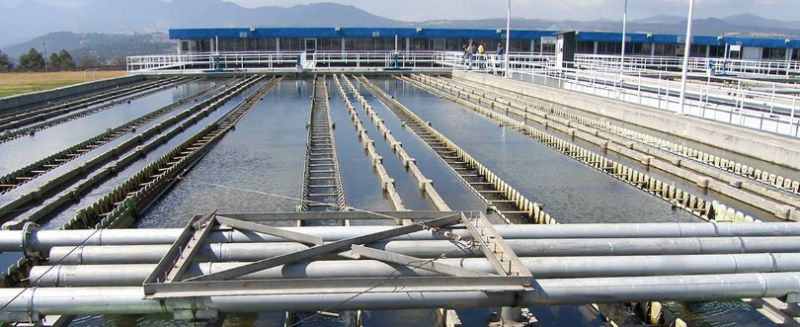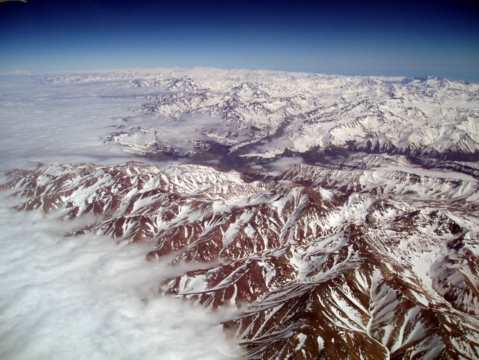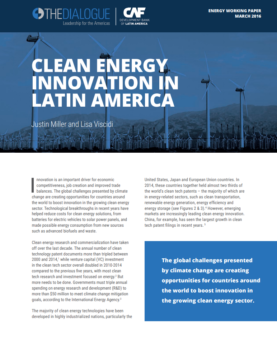
Latin America Clean Transport Forum
The electrification of the transportation sector is crucial to reducing carbon emissions and tackling global climate change.
Mexico City could run out of water by late June, an official from the national water commission, Conagua, said last month. The Cutzamala System—which is responsible for providing the capital with nearly a quarter of its water supply—is at 40 percent capacity, a historic low. What are the main reasons for the water scarcity in Mexico City? How likely is the megalopolis to run out of water before July, and what programs and policies could help remedy the situation? What kind of impact could the crisis have on the country’s June 2 elections?
Itzkuauhtli Zamora Saenz, professor of sociology at the National Autonomous University of Mexico: “Mexico City has not been self-sufficient in terms of water since the second half of the 20th century. To make up for that, the city depends on external sources, like the Lerma and Cutzamala systems. Despite that, the scarcity or low quality of water in the household is a reality that thousands of people have lived for decades, especially in the borough of Iztapalapa. In addition to the reasons for the scarcity (low levels of water in the Cutzamala basin due to climate change and large-scale devel- opments that take up vast amounts of water), there are also structural problems, like water leakage (40 percent of water is estimated to be lost this way) and urban growth. Nevertheless, it is unlikely that Mexico City will experience a ‘day zero’ by July. Authorities are already undergoing repairs to bring water from neighboring aquifers, and they will implement other emergency measures to ameliorate the crisis. They’re likely not the best solutions to remedy the problem in the long term, because what is necessary is to tend to the aforementioned structural problems. Without a doubt, the issue of water will continue to be central to the discourse of the presidential and gubernatorial candidates. It will be important to analyze their proposals in order to know whether they are realistic or sustainable.”
José Alfredo Ramirez, co-founder and director of Groundlab architecture studio: “We need to understand whether this is a question of water scarcity or of water management. Also, the contemporary crisis is the result of socio-historical and environmental processes that started with the Spanish conquest, where water was seen as an enemy. Mexico City depends on the extraction of aquifers for 60 percent of its water supply, and this has caused the city’s gradual sinking. The remaining 40 percent is extracted from remote basins, like Cutzamala and Lerma, which require a substantial amount of energy for transportation and ex- ploitation and extraction of landscapes that are invisible to the common user. As if that were not enough, Mexico’s drainage system combines rainwater and wastewater in the ‘Drenaje Profundo’ system, which gets discharged outside of the capital, contaminates its surroundings and prevents rainwater from refilling the aquifer. To understand what could help alleviate the situation, we need to look at this as a water management crisis, not a water scarcity scenario. This is not to deny the crisis of water accessibility and the lack of resources, but rather to highlight which management alternatives are needed. Climate change will deepen the crisis and make the most vulnerable communities more exposed to its effects, which include longer droughts, heat island effects and severe health impacts (such as pollution and poor water quality). There are several solutions, such as the ones that fall under the category of green infrastructure and decentralized nature-based solutions. All of them have a social justice perspective and resilience approach, but there is no single solution.”
June Garcia-Becerra, assistant professor at the School of Engineering at the University of Northern British Columbia: “Water scarcity in Mexico City is exacerbated by a combination of geographic, management, governance and urbanization factors. The city experiences a distinct dry season from October to April or May, leading to natural water shortages. Weak federal and municipal water governance, exemplified by Conagua and Sacmex, contributes to administrative challenges and limited capabilities, hindering sustainable and long-term water management projects, and a gap between perceived and actual water issues further worsen the problem. The likelihood of Mexico City running out of water before July is contingent on formal and informal practices. Considering the chronic nature of the city’s water issues and the reluctance to make evidence-based decisions, the situation is more indicative of longstanding challenges than an imminent crisis. While officials mention approaching ‘day zero’ for the city’s large, centralized infrastructure, predicting this for current decentralized and informal water sources is difficult. For decades, researchers and practitioners have known that the centralized system faces vulnerability due to increasing demand, aging infrastructure and climate change, with estimates suggesting only 75 percent coverage of demand by 2030. However, decentralized and informal water sources (for example, self-managed water sources) and a black market for water makes a precise prediction impossible. Mexico City can address its water scarcity by building upon existing climate change-related initiatives, like implementing decentralized and nature-based solutions for local (off-grid) water and sanitation services, including water reuse, recycling and reclaiming. Encouraging entrepreneurship to foster local and circular economies around water and sanitation services is also crucial. While some progress is observed, a more comprehensive implementation is needed. These measures can mitigate vulnerabilities to climate change, promote sustainable water management and contribute to avoiding a ‘day zero’ scenario, enhancing the overall water supply situation in the city.”
Elias Cattan Cherem, founder and director of Taller 13 architecture studio: “What is really at stake is the Lerma-Cutzamala (the pipe and pump cross basin aqueduct system that spends the same amount of electricity as Puebla), since we extract at least double what we put back and are doing little to nothing to reverse this. We must understand that we all share a living system. This could be solvable if we let go of our car culture and focus on regenerating our ecosystems, from our ‘Bosque de Agua’ to our wetland systems. We must also alleviate traffic and improve air quality in the process. We must also update our policies and infrastructure to bring a new way to be rooted in place, as well as honoring our ancient ecosystemic essence and enable true universal access. We should do this not only for humans, but rather focus on designing a multi-species city that deeply integrates biological systems to support human activity and vice versa. Every building can harvest, treat and reuse its own water. We need a systemic approach. Mexico City could be the first metropolis to be self-sustaining, with its own water supply, and export clean, treated water instead of sewage to the Mezquital Valley. We have the power to transform our landscapes in a way that honors life.”
Christina Boyes, assistant professor in the division of international studies at CIDE in Mexico City: “Mexico City, like most megacities, faces significant water supply issues. The city is dependent on rainwater to recharge local aquifers but has faced decreasing rainfall for several years. Inequalities in supply—with the wealthier western side of the city receiving more ample and cleaner water and the most populous and poorer neighborhoods receiving water by truck—exacerbate the issue. Additionally, the city loses approximately 40 percent of its water supply in leaks and through infrastructure damage. While repairs are continuously underway, little has been done to change consumer behavior. The city recently launched a series of behavioral campaigns, but much more work is needed on this front. Water recycling would also significantly decrease water stress in the city, but public opinion on the issue complicates adoption of water recycling and treatment as a potable water supply source. Considering how important freshwater is to the city, it is likely to play a significant role in the coming elections. We’re already seeing attempts by both sides to politicize the issue.”
 The Latin America Advisor features Q&A from leaders in politics, economics, and finance every business day. It is available to members of the Dialogue’s Corporate Program and others by subscription.
The Latin America Advisor features Q&A from leaders in politics, economics, and finance every business day. It is available to members of the Dialogue’s Corporate Program and others by subscription.
The electrification of the transportation sector is crucial to reducing carbon emissions and tackling global climate change.
Though the COP21 negotiations promise to be complex, they also present an opportunity for the region to address existing vulnerabilities.
In the wake of the COP21 global climate talks, governments must shift attention to how they will actually follow through on the commitments made in Paris. One concept is central to achieving that goal – innovation.
 Mexico City could run out of water within months, according to an official from the national
water commission. A facility of Mexico’s Cutzamala water system is pictured.
Mexico City could run out of water within months, according to an official from the national
water commission. A facility of Mexico’s Cutzamala water system is pictured.

 Video
Video